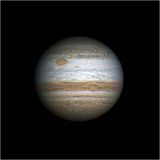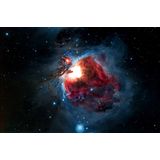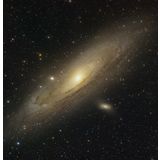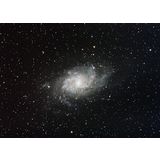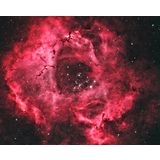
December brings cold winter nights and some of the clearest skies of the year for many locations. Bundle up to keep warm and get outside for stargazing fun!
Here are a few of Orion's top picks for December stargazing:
December Meteors - On December 13th, take advantage of the dark, New Moon sky conditions to see the Geminids meteor shower. Leftover debris from the disintegrating asteroid 3200 Phaeton will streak across the sky at a rate of up to 120 meteors per hour. The best views will be from a dark sky location on the night of December 13th into the early morning hours of December 14th. Look for meteors to appear to radiate out from the constellation Gemini.
Big Bright Jupiter - In early December, go outside around 7PM on a clear night. While facing east, look about halfway upwards towards the zenith (the zenith is directly overhead) to find the bright planet Jupiter. This gigantic planet is a perfect target for telescopes of all sizes throughout the month. Jupiter reaches "opposition" on December 3rd, when it will be opposite the Sun in the sky and visible all night long.
Our All Time Favorite - Low in the eastern sky by 9pm you'll find the Orion Nebula (M42), a patch of glowing gas and dust where stars are formed. You can spot M42 just below Orion's belt; sharp-eyed observers can see it as a "fuzzy" star, easily seen in a pair of 7x50 or larger binoculars. By midnight it will be nearly due south, about halfway between the horizon and the zenith. The view through a telescope is spectacular.
Great Galaxies - Around 7pm in early December, galaxies M31 and M33 will be on either side of the constellation Andromeda and nearly overhead. Use a star chart or planisphere to catch them with 50mm or larger binoculars, or take a deeper, better look with a telescope.
Theta Orionis, the Heart of the Orion Nebula - Also known as the Trapezium, the four brightest stars in the core of M42, the Orion Nebula. The Trapezium stars are extremely hot and the ultraviolet light they release makes the surrounding gas fluoresce, or "glow". It will take a 4" or larger telescope to see all four Trapezium stars; they are very close together, so use a Barlow or a higher power eyepiece when M42 is higher in the sky and the seeing is steady.
Three Little Clusters, All in a Row - M36, M37 and M38. If you've ever thought all star clusters look alike, track three clusters down for a pleasant surprise. They are in the constellation Auriga which has the bright star Capella high in the northeast around 7pm in early December. The clusters can be seen with just about any telescope. You'll notice differences in the star patterns and intensities between the clusters. Use low powers to find objects like these star clusters, since you'll have a wider field of view, making it easier to sweep the sky.
December's Challenge Object, The Rosette Nebula - Wait until at least 10pm or midnight to see this nebula east of Betelgeuse, the reddish star in the eastern shoulder of Orion. About a binocular field away in the winter Milky Way will be the Rosette Nebula. It's an emission nebula like the Orion Nebula, but far dimmer and even larger. There is a star cluster, NGC 2244, in the center of the Rosette that you can see even with small 80mm telescopes. Use a low power, wide angle eyepiece and an Oxygen-III filter to tease out the nebula's glow around the cluster.
All objects described above can easily be seen with the suggested equipment from a dark sky site, a viewing location some distance away from city lights where light pollution and when bright moonlight does not overpower the stars. All objects have been verified by actual observations by Orion Telescopes & Binoculars Staff at Fremont Peak State Park, and/or Deep Sky Ranch, 60 miles and 90 miles respectively from San Jose International Airport, San Jose, CA.




